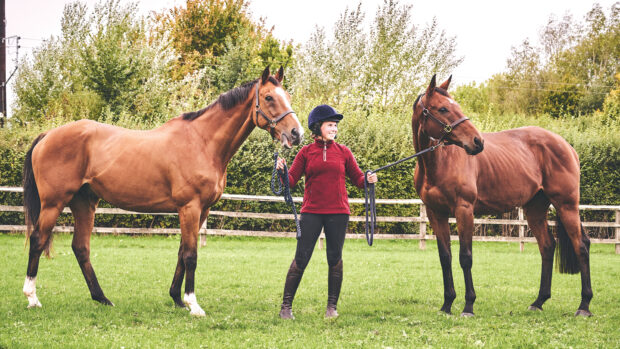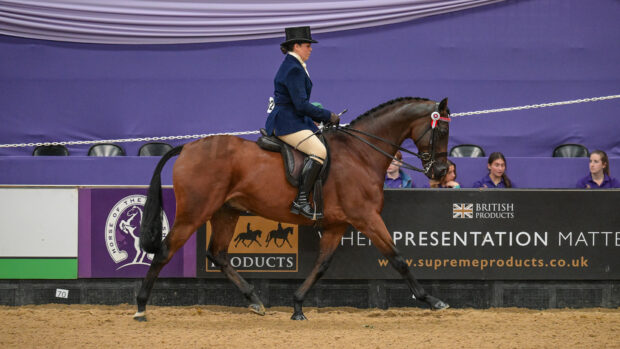Retraining thoroughbreds straight from the racecourse is a popular and often affordable option for horse-owners who are looking for their next willing partner. However, it can be a complex process and patience is essential for these highly intelligent animals to adapt to their new discipline.
Gillian Carlisle is the chief executive of the British Thoroughbred Retraining Centre (BTRC) and highlighted three vital stages to transforming an former racehorse — rehabilitation, retrain and rehome — during a demonstration at the International Eventing Forum, held at Hartpury College on 3 February.
Stage one: rehabilitation
“When horses come to us at BTRC, they will be assessed monthly,” said Gillian. “We do nothing with them until their initial assessment. At that point, we can gain some idea about what the horse’s future may hold in terms of retraining.”
At BTRC, all the horses are x-rayed when they first arrive, and back problems are commonly shown up through this.
“From the horses we get that are considered ‘problem horses’ or unrideable, we have found that over 80% of them had a clinical issue, that we could then look into. At this stage, lunging is a big no — it will only cause a more broken horse,” added Gillian.
The rehabilitation phase is all about building the horse’s confidence, Gillian explained.
“We long-rein all of our horses to start with and usually get them out and about around the farm,” she said.
“It’s important to build new experiences for them also, such as passing other horses left-hand to left-hand, and getting them to stand still. We want them to be developing strength and muscle tone.
“We will be working on flexibility at this stage, many ex-racehorses will want to rush so it’s about slowing them down. Until they are doing nice work on the ground we won’t put a saddle on them. It’s about breaking the cycle they are used to when in-training, changing their routine, feed, and building up their muscle strength.
Stage two: retraining
Gillian describes this as the “middle stage” during which a horse can “do nothing wrong.”
“We want the horses to make mistakes and learn from it during their retraining,” added Gillian. “It’s about communication with the horse, and experimenting to see how the horse corrects itself.
“Riders at this point have to be careful because some people send a message to the horse while in the saddle, but if the horse doesn’t respond they just keep doing the same thing over and over again. As a rider, you have to learn that if something isn’t working, try something else.”
Gillian highlights that “for every action, the horse should give you a reaction” – whether bad or good. If you put your leg on and the horse goes forward, that is positive.
Gillian often sees riders asking for canter too soon, or worrying because the horse isn’t striking off on the correct leg.
“Riders can pull back to trot far too quickly, while you should initially just be pleased the horse made that transition up to canter regardless of the lead. You need to let the horse find himself, while giving him clear messages.”
Over-bitting a horse is also a common issue while people are retraining an racehorse because they can often be strong.
“It is also vital not to try and overbalance the horse — they need to discover their own balance,” said Gillian. “Always let an ex-racehorse go forward. If you get into a problem, just allow them to go forward, away from your leg.
“People often over-ride horses once they feel they are going nicely. But people forget ex-racehorses are using muscles they have never used before — so there will be a lot of muscle fatigue. If a horse schools nicely for 20 minutes, for example, maybe the next day go for a hack — variety is really important at this stage.”
Stage three: rehoming
“A horse is ready to go out on loan to a new home when they are established, happy, relaxed and confident,” said Gillian.
“The horse will be ready when they can hold their head and carry themselves properly, with a comfortable canter.
“The worst thing you can do to an ex-racehorse during retraining is stick them in draw reins and make them hold their head in a certain way. Flexibility is important, and soft bungies can be used but nothing too restrictive. At this final stage, lunging can be incorporated once they are more established.”
Would you like to read Horse & Hound¹s independent journalism without any adverts? Join Horse & Hound Plus today and you can read all articles on HorseandHound.co.uk completely ad-free.




